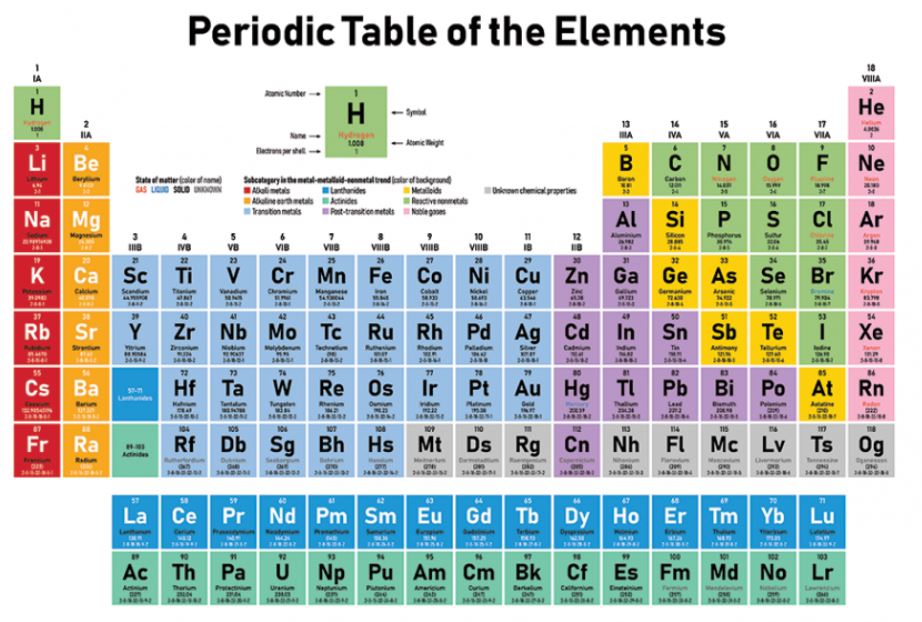Hello and welcome to Teach Kids Chemistry! Today, we will be discussing the fascinating element scandium. Scandium is a rare earth metal that has unique properties and uses in various industries. We will explore its atomic structure, physical and chemical properties, and its role in everyday life. So, let’s dive in and discover the wonders of scandium!
The Periodic Element Scandium Overview
Scandium is a chemical element with the symbol Sc and atomic number 21. It is a silvery-white metal that belongs to the transition metals group. Scandium has an atomic mass of 44.96 u and its nucleus contains 21 protons and 21 electrons. The number of neutrons in scandium can vary, but the most common isotope has 24 neutrons. Scandium is located in period 4 and group 3 of the periodic table. It is a solid at room temperature and has a density of 2.985 g/cm³. Scandium is a metal with an electronegativity of 1.36. Its specific heat capacity is 0.568 J/g·K, and it has a melting point of 1541°C and a boiling point of 2836°C.Scandium is a relatively rare element and is not found in large quantities in the Earth’s crust. It is mainly obtained from minerals such as thortveitite, euxenite, and gadolinite. Scandium has a number of important applications, including its use in aerospace and defense industries due to its high strength and light weight. It is also used in the production of high-intensity lamps, sports equipment, and in the manufacture of certain types of glass. Scandium is also used in some medical applications, such as in the treatment of liver cancer. Despite its many uses, scandium is not widely used due to its high cost and limited availability.
Everyday objects that contain the periodic element scandium?
There are many everyday objects that contain chemicals or chemical compounds. For example, water is a chemical compound made up of two hydrogen atoms and one oxygen atom (H2O). Salt, which is commonly used in cooking, is a compound made up of sodium and chloride ions (NaCl). Baking soda, which is used in baking and cleaning, is a compound made up of sodium, hydrogen, carbon, and oxygen (NaHCO3). Vinegar, which is used in cooking and cleaning, is a solution of acetic acid (CH3COOH) and water. These are just a few examples of everyday objects that contain chemicals or chemical compounds.
Differences in the periodic element scandium across states of matter
The state of an element can vary greatly depending on its temperature and pressure. At standard temperature and pressure (STP), most elements are either solids or gases. Solids have a fixed shape and volume, while gases have neither. As temperature and pressure increase, some solids can become liquids, which have a fixed volume but take the shape of their container. As temperature and pressure continue to increase, some liquids can become gases, which have neither a fixed shape nor volume. At extremely high temperatures and pressures, some gases can become plasmas, which are highly ionized and conductive. Plasmas are often found in stars and lightning bolts, and have unique properties such as the ability to emit light.
Is the periodic element scandium dangerous or radioactive?
Scandium is not considered a dangerous or radioactive element. It is a silvery-white metal that is relatively soft and lightweight. Scandium is commonly used in the aerospace industry due to its high strength and resistance to corrosion. It is also used in the production of high-intensity lamps and in some types of sports equipment. While scandium can be toxic in large amounts, it is not considered a significant health hazard in normal use. Overall, scandium is a relatively safe and useful element that has a variety of practical applications.
Is the periodic element scandium rare and expensive?
Scandium is a relatively rare element, but it is not necessarily expensive. It is found in small amounts in various minerals, but it is not typically mined on its own. Instead, it is often extracted as a byproduct of other mining operations, such as those for uranium or titanium. This means that the cost of scandium can vary depending on the availability of these other minerals. In recent years, there has been an increase in demand for scandium due to its use in various industries, such as aerospace and sports equipment. However, efforts are being made to develop more efficient and cost-effective methods for producing and using scandium.
Learn about all the elements with a periodic table!

